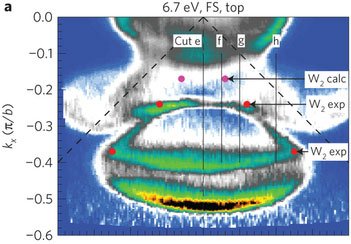Scientists from U.S. Department of Energy’s Ames Laboratory cultivates a new kind of Weyl semimetal. This Weyl Semimetal allows advancing study of Weyl fermion. However, Weyl fermion is a type of massless elementary particle hypothesizes by high-energy particle theory. This is useful in producing high-speed electronic circuits and quantum computers.
Researchers create a crystal of molybdenum and tellurium. It is an only compound that shows a type of Weyl state. There are holes and electrons band normally separate by an indirect gap touch at a few Weyl points. Those points are similar to magnetic monopoles in the momentum space and are connect by Fermi arcs.
To determine the existence of material, a combination of angle-resolved photoemission spectroscopy (ARPES), modelling, density functional theory and careful calculations were used. Although, the material provides a new scaffold to study Wel fermion. This may also cause creation of more new materials with different transport properties.
Adam Kaminsky, said, “This an important, interdisciplinary discovery. Because it allows us to study many aspects of these exotic particles predicted by high energy physics theory in the solid state. It does not need extremely expensive particle accelerators. From my perspective, it is absolutely extraordinary to observe two bands touching each other at certain points and being connected by Fermi arcs. Fermi arcs are the objects that are prohibited to exist in ordinary materials.” (Adam Kaminsky is Ames Laboratory scientist and professor in the Department of Physics and Astronomy at Iowa State University.)
